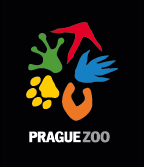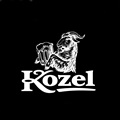2024: The Year of Extraordinary Young
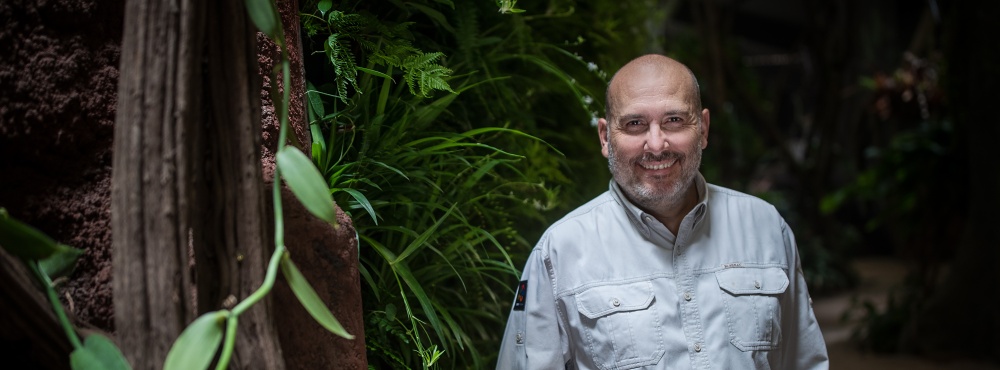
Altogether 1,043 young of reptiles, birds and mammals have been born or hatched during 2024. It is not so much about their total number, but rather the exceptionality of many of them. Only a few zoological gardens can boast of three ape babies in one year, and no other zoo in Europe has raised a second pangolin baby. However, the year of 2024 was extraordinary also due to the start of the reintroduction of Przewalski’s horses to central Kazakhstan, in which Prague Zoo plays the crucial role. Also the opening of the new Gobi exhibit is related to Przewalski’s horses. The number of visitors in 2024 was 1,387,433 people.
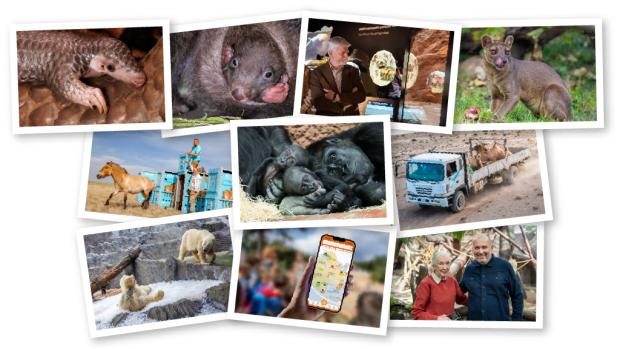
#1 Gorilla females Mobi and Gaia
At the beginning of the year, on January 2, the first gorilla baby was born in the new Dja Reserve House. Duni, the daughter of the famous Moja, is its mother, Kisumu is the father. It turned out to be a female. She was named Mobi based on the suggestions of children from Somalomo, Cameroon.
A quarter of a year later the second gorilla baby was born in the Dja Reserve, again a female. Her mother is Kijivu, who has delivered four babies in the old gorilla house in the last two decades (well-known Moja was the first), Kisumu is also the father. The famous conservationist Jane Goodall has chosen her name Gaia.
The two mothers’ attitude to care for their babies differs. Kijivu does not deny her experience, while Duni is more anxious. This manifets in the development of both babies; however, the most important thing is that they can play together and stimulate each other in their development.
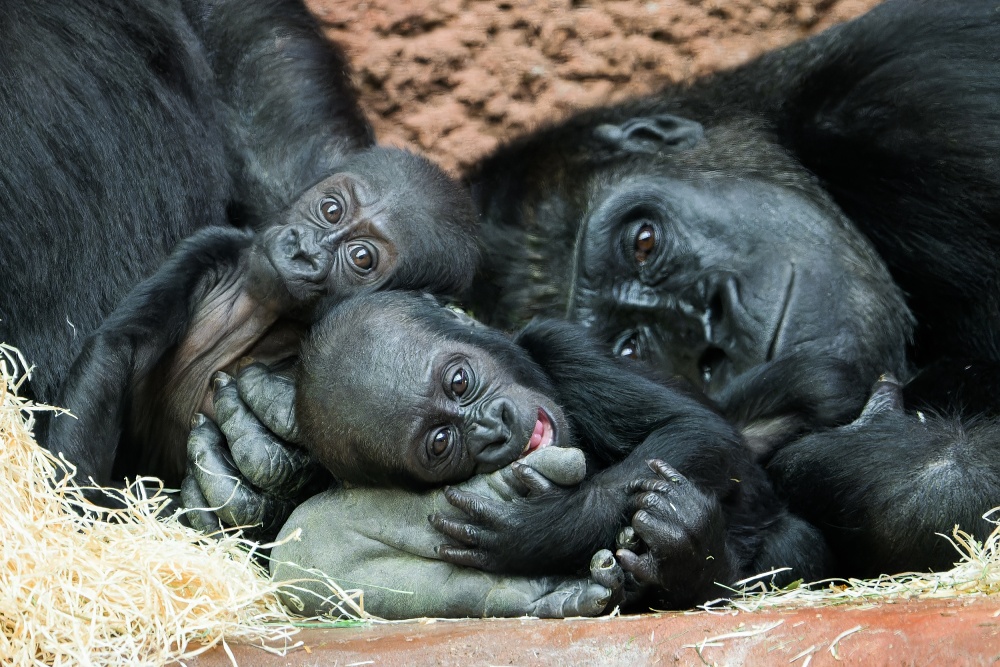
Western lowland gorilla females Mobi and Gaia with their mothers. Photo: Petr Hamerník, Prague Zoo
#2 The second rearing of pangolin pup in Europe
The rearing of the first pup of the Chinese pangolin – the female Šiška – in Prague Zoo was the news of the year 2023. It was the first pangolin pup reared in Europe, and at the same time one of the biggest breeding successes in the history of Prague Zoo so far. The rearing of the second pangolin pup confirmed this unprecedented success.
The female, later named Connie, was born on July 1. Her parents are the female Run Hou Tang and the male Guo Bao, like in the case of Šiška. Unlike Šiška, this pup didn’t need to receive artificial food supplement; but the problem started with transition from mother’s milk to the food of adult pangolins. It was resolved by adding ants Camponotus nicobarensis to the food mixture.
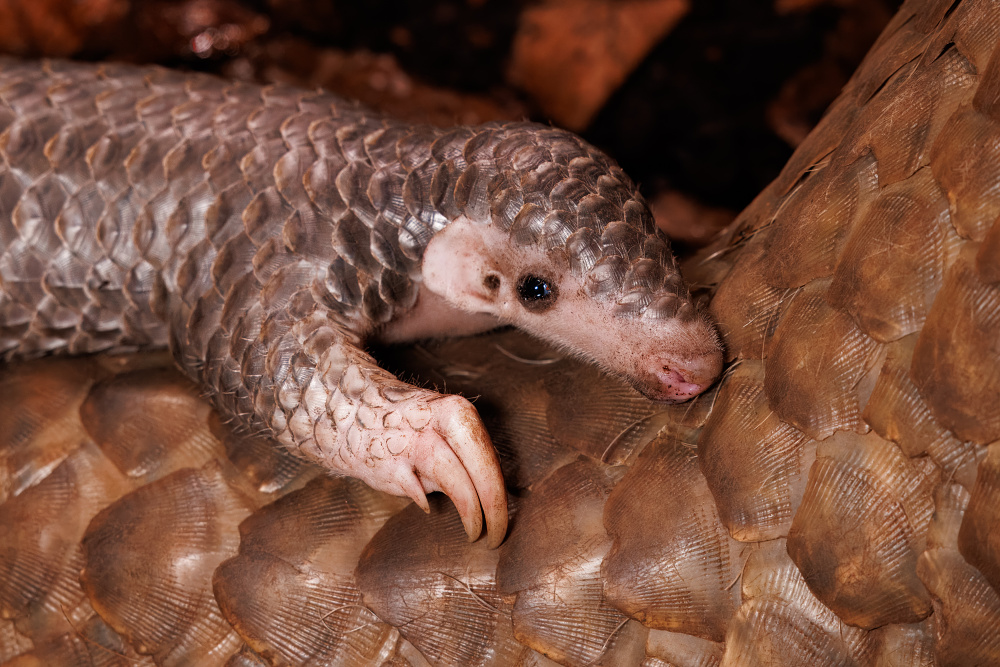
Connie riding on the tail of her mother. Photo: Miroslav Bobek, Prague Zoo
#3 The first Czech wombat and other marvellous young
Strictly speaking, the first Czech wombat was already born in 2023; however, with marsupials we consider their “birthday” to be the day when they “peek” out of their mother’s poach. In the case of our young—the female Mersey—this happened only at the beginning of 2024.
Another Sumatran orangutan male is extremely valuable from the point of view of breeding. He was born on May 2, and later was named Harapan. Together with four-year-old Kawi they are the great grandchildren of the orangutan couple, who arrived to the zoo from the wild.
Young of black and rufous elephant shrews, jaguarundis and Chinese gorals rank among another significant breedings. Among birds, we can highlight, for example, the first European breeding of crested oropendola after fifteen years; among reptiles, breeding of the next generation of black marsh turtle.
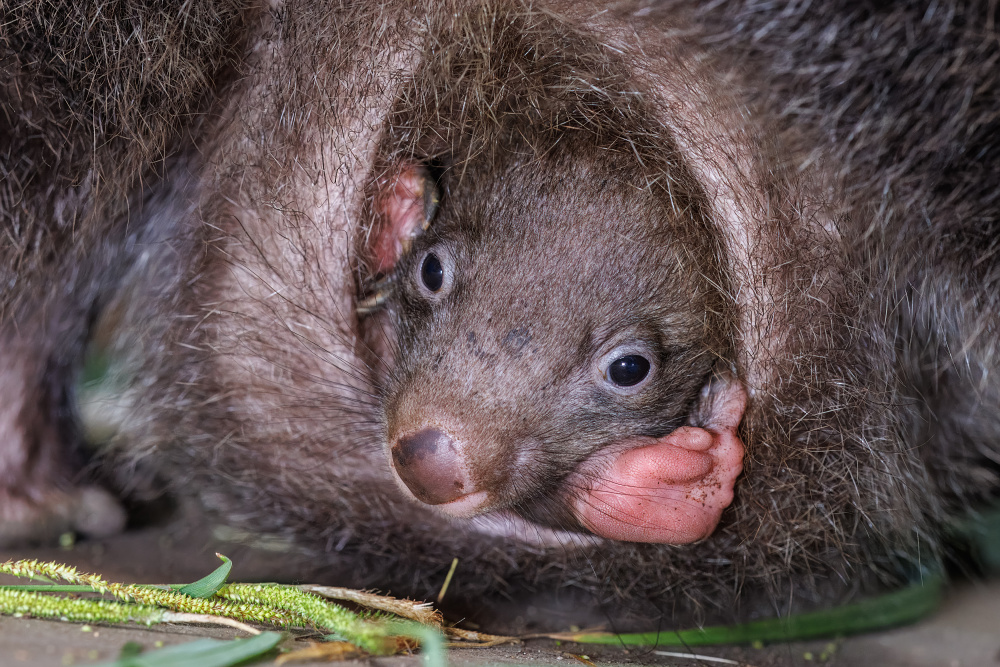
Mersey, the female, shortly before she started leaving her mother’s poach.
Photo: Miroslav Bobek, Prague Zoo
#4 The new Gobi exhibit
At the upper chairlift station, where visitors have been accustomed to seeing Przewalski's horses for decades, new stables have been built and enclosures have been renovated. In addition, a small pavilion has been created here, supplemented by exhibits for manuls. The entire area has been enriched by a number of additions that draw attention to the attractions of the Gobi Desert.
The small pavilion of this new exhibition presents small mammals, reptiles and invertebrates from southern part of Mongolia, including Tartar sand boa, which became the archetype of legendary Olgoi-khorkhoi. There is also a space dedicated to presentation of Przewalski’s horse and its reintroduction to Mongolia. The surroundings offer a replica of the rocks of Flaming Cliffs and local paleontological discoveries, or typical Mongolian ovoo.
The new Gobi exhibit was ceremonially opened by the President of Czech Republic, Petr Pavel, on March 23.
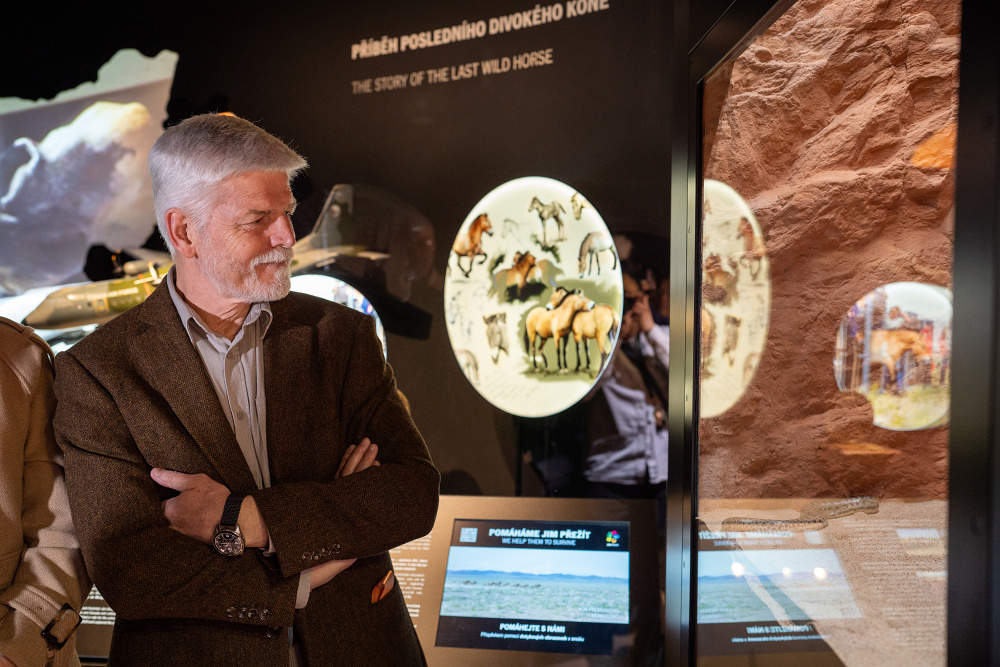
Opening the new Gobi Exhibit. Photo: Oliver Le Que, Prague Zoo
#5 The new and re-established species in Prague Zoo
The construction of the Gobi exhibit also meant the arrival of many new species: Przewalski’s toadhead agama and Mongolian sunwatcher, Gobi racerunner, Tartar sand boa or steppe lemming.
And yet, new species were also coming to other parts of the zoo. Perhaps the most interesting were the fossas, the largest carnivorans of Madagascar, a pair of which has been in the Feline and Reptile House since August. Another interesting species, which enriched Prague Zoo at the beginning of the year, is the flightless Fuegian steamer duck.
Among the species, which had been in the off-exhibit areas and have been introduced to visitors only during 2024, we must mention the unique Brazilian merganser and fascinating Raggiana bird-of-paradise.
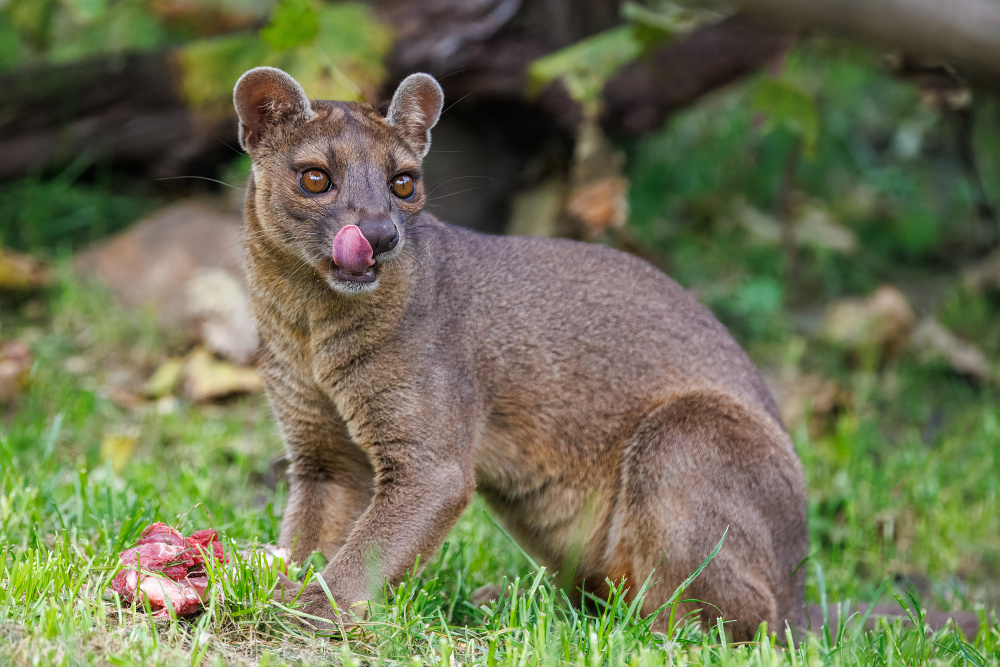
The female fossa in the outdoor enclosure. Photo: Miroslav Bobek, Prague Zoo
#6 Jane Goodall in Prague
In May, the world-renowned primatologist and conservationist Dr. Jane Goodall made her third visit to Prague Zoo. Public interest was enormous, and even at the age of ninety, Dr. Goodall demonstrated incredible charisma, tirelessness, and a sense of humor.
The main points of her programme at Prague Zoo were the naming of a female gorilla baby, for whom she chose the name Gaia, and the presentation of the Czech translation of her book Pangolina, which is intended for children and deals with pangolins. After all, Dr. Goodall did not miss a visit of the female pangolin Šiška, and was very pleased with her.
Her lecture then took place in the auditorium of the Czech University of Life Sciences, but the capacity of the large hall was not even close to sufficient for the number of people interested.
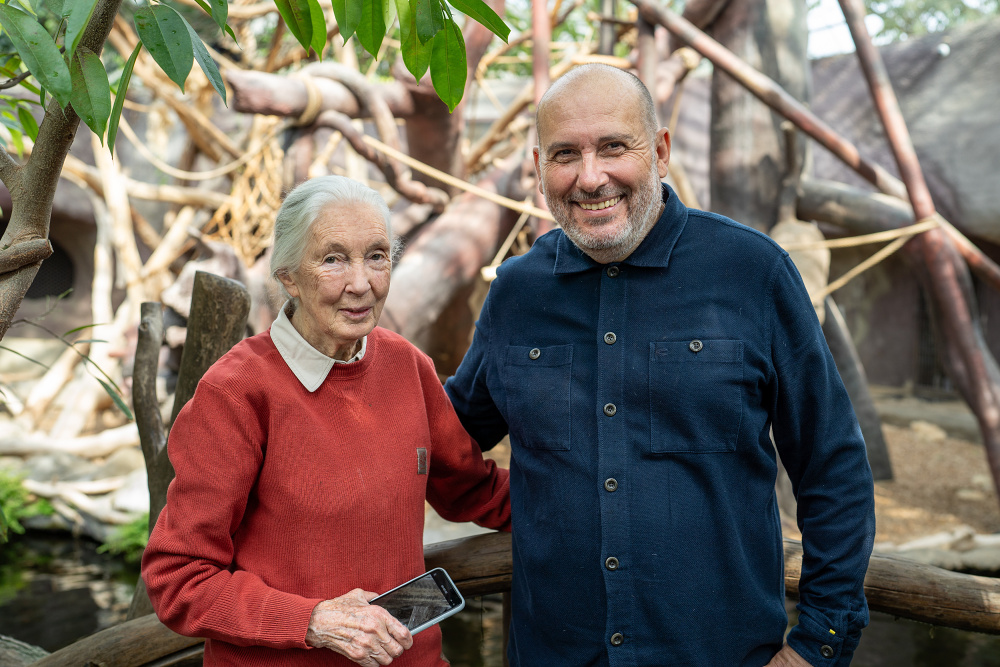
Jane Goodall in the Indonesian Jungle House with Prague Zoo Director Miroslav Bobek.
Photo: Oliver Le Que, Prague Zoo
#7 Return of the wild horses to Kazakhstan
After more than a year of preparation, the first air transport of Przewalski's horses from Central Europe to the Altyn Dala steppes in central Kazakhstan took place in early June. It marked the beginning of a long-term reintroduction project for the last wild horse species to another area where it once ranged.
Prague Zoo plays a key professional and organizational role in this project. Together with the Army of the Czech Republic, it ensured the transport of the first seven Przewalski’s horses from its station in Dolní Dobřejov and from Tierpark Berlin to the Alibi reintroduction center. First, a CASA C-295M army aircraft transported three horses from Prague to Kazakhstan, and then a second one transported four individuals from Berlin.
In the coming years, it is planned to transport up to forty more Przewalski’s horses to Kazakhstan by Czech Army aircraft.
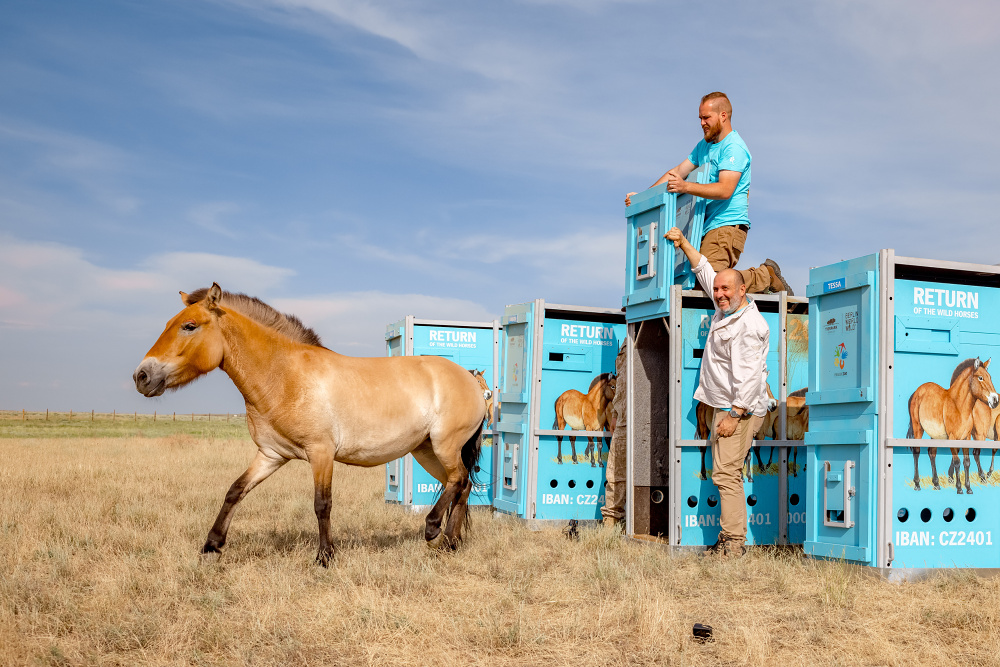
Releasing Przewalski’s horses into the acclimatization enclosure in Alibi.
Photo: Anna Bernátková, Prague Zoo
#8 We helped them to survive
The beginning of the return of wild horses to Kazakhstan has somewhat overshadowed the many other activities on protection biodiversity that Prague Zoo runs on five continents.
In Mongolia, preparation continued for the future reintroduction of Przewalski’s horses to the Valley of Monasteries in the east of the country. Among other things, a crucial agreement was concluded with the Mongolian Ministry of Environment and Climate Change. Seven wild camels were transported to the Toli Bulag breeding center in southern Mongolia, which was built last year.
Among domestic projects, we must mention the efforts to save the common crucian carp. Thanks to the interest of fishermen, they have already been successfully placed in significant numbers in more than twenty reservoirs.
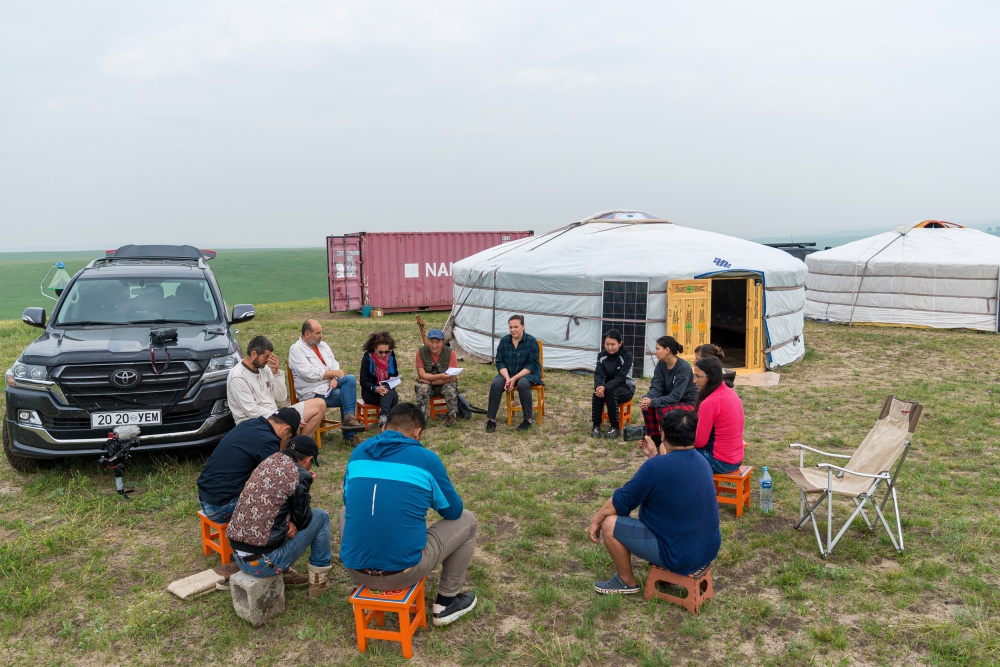
Transporting wild camels to Toli Bulag. Photo: David Broda, Prague Zoo
#9 The Zoological Garden under the ice
Summer brought extreme weather—tropical heat and heavy rains associated with the threat of floods.
Both animals and visitors were relieved from extreme temperatures by the summer holiday project “Zoo under Ice”. The Bidfood Company supplied the zoo eight times with 7.5 to 12 tons of ice, which was placed mainly in the enclosures of selected animal species and partly in the visitor areas. Prague Zoo thus became one of the coldest places in the Czech Republic in at least some parts of its premises.
In mid-September, Prague was again threatened by floods and the zoo was preparing to evacuate the lower part of its area. In the end it was not neccessary, but due to heavy rains that waterlogged the ground, Prague Zoo was ultimately closed for four days.
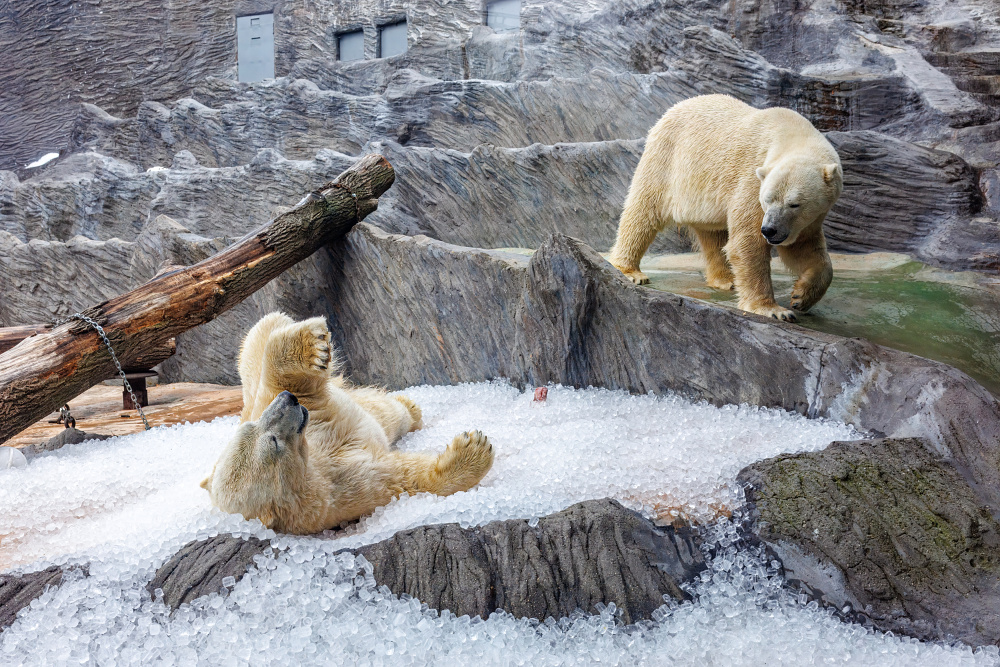
Polar bears enjoy a flood of ice cubes in hot weather. Photo: Miroslav Bobek, Prague Zoo
#10 Mobile application
In October, Prague Zoo introduced its mobile application for smartphones. Its task is to simplify and make visits to the zoo more enjoyable. It is based on an interactive map of the area with the option of choosing routes or points of interest, whether it is an animal species or a restaurant. The application also allows the purchase of entrance tickets, draws attention to the times of commented animal feedings or other events, and offers additional information on individual species.
The mobile application was created by students from the Czech IT Academy in cooperation with Komerční banka over eight months of development. It is available for both Android and iOS devices. It is the first such initiative in the context of domestic zoos.
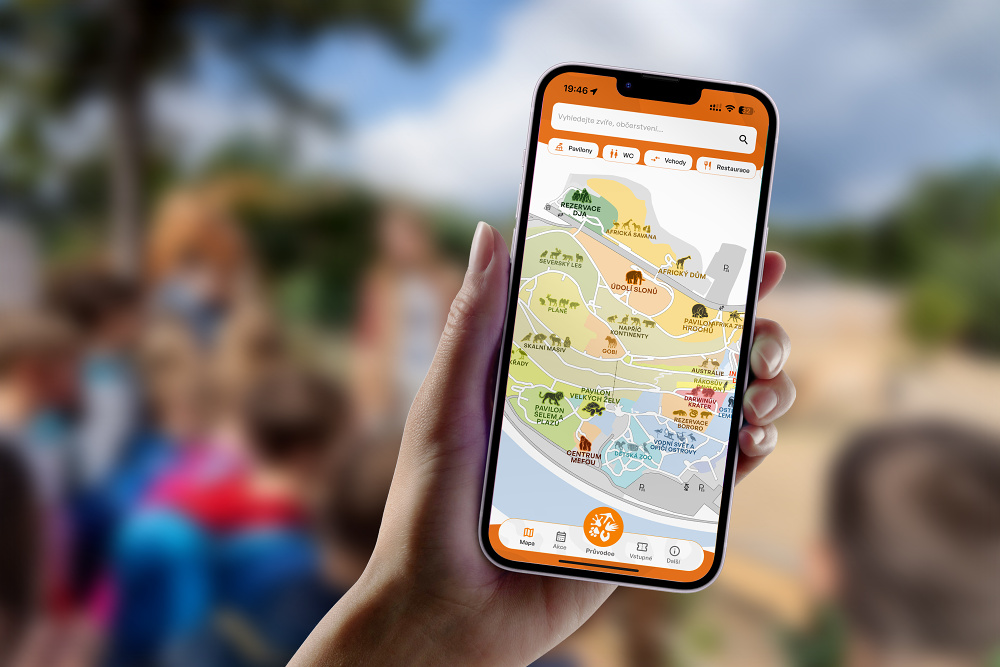
The Prague Zoo mobile application is currently rated 4.9 out of 5. Photo: archive of Prague Zoo
Thank you to everyone who helps Prague Zoo,
and to those who visit and love it!
Miroslav Bobek, ředitel Zoo Praha
ZOOPRAHA.CZ
Contacts
- The Prague zoological garden
U Trojskeho zamku 120/3
171 00 Praha 7
Phone.: (+420) 296 112 230 (public relations department)
e-mail: zoopraha@zoopraha.cz
Others
